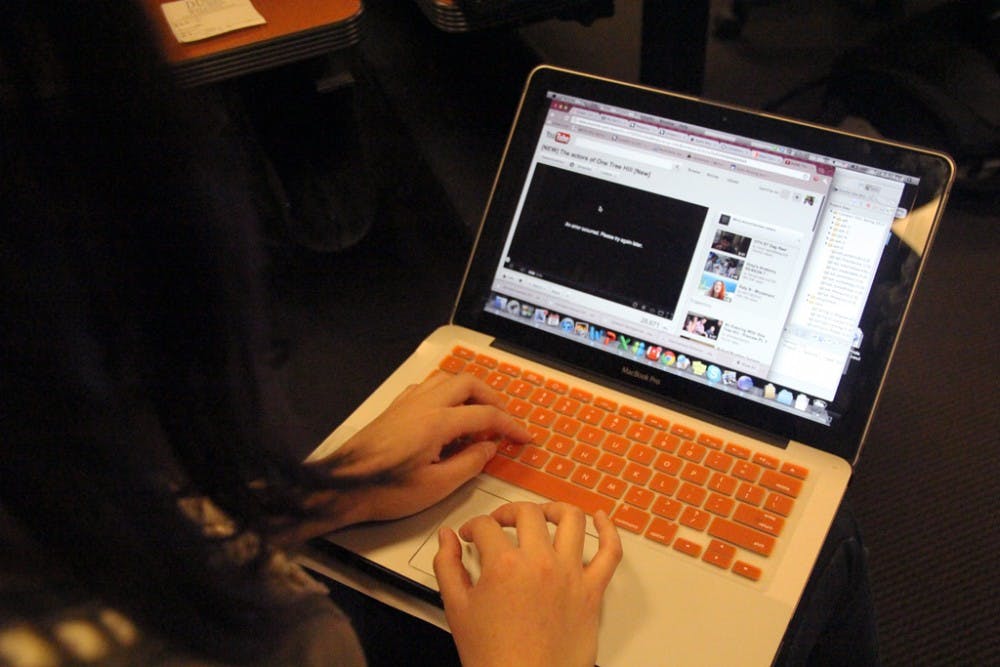Nobody likes traffic jams, especially with Internet connections.
Duke recently increased the bandwidth of its wireless network from three gigabytes to 20 gigabytes, but the process of upgrading the system resulted in slower Internet connections for individuals across campus. Cara Bonnett, Office of Information Technology managing editor, wrote in an email Monday that OIT is working to address the problems, but some students are still expressing concerns about slow-loading Web pages and time-consuming downloads.
“It’s been so slow that my entire connection keeps cutting in and out—so frustrating,” said Gavin Forrest, a junior.
Some students noted that certain sites, such as Netflix, are unable to stream videos, online assignment submissions lag and the occasional image comes in pixilated.
Although the University has expanded its bandwidth in recent months with the goal of increasing speed, some students are still experiencing slower connections. Difficulties in routing Internet traffic congestion led to some slowdowns in Internet connection speed in early March, Bonnett said.
Rather than converting to the recently upgraded Internet connections, some network traffic is being routed back through a smaller circuit.
“The resulting congestion caused downloads from external websites to be slower than usual,” Bonnett said.
The issue reached its peak in early March, Bonnett explained, adding that some of the problems may be due to issues with one of Duke’s Internet service providers.
Several students reported the problem to OIT, and Bonnett noted that her office tried to resolve problems as quickly as possible, adding that issues were addressed within 24 hours.
Despite these reassurances, the slow Internet continues to cause problems for students.
“I’ve noticed it being slow all the time but especially in my [computer science] lab, which is a huge inconvenience because it keeps crashing while I’m trying to snarf code,” sophomore Marshall Vingi said.
Vingi added that in computer science classes, students are expected to both download project instructions and submit the final assignment via Internet. Crashing pages creates difficulties when students try to complete an assignment.
“Occasionally my connection to Google Docs has been slow to save,” senior Shreyan Sen said. “While that hasn’t caused any problems for me yet, you can imagine how a shaky connection could be problematic for heavy cloud users.... A lot of [Google Docs are] used for collaborative work.”
This expansion of bandwidth comes a year after Duke committed to steadily improve wireless service. Last July, Duke committed to providing high speed Internet service by participating in Gig. U—a collaborative project with dozens of other American universities and communities to promote high speed networks in order to accommodate academic, professional and personal online pursuits.
Duke is also making improvements to provide better redundancy for the system, Bonnett noted. Redundancy means that each connection can handle the full usage of Internet traffic in case one of Duke’s two connections goes down. The improvements are also equipped to provide automatic adjustments when interference from other devices occurs. OIT is currently upgrading wireless access points and controllers across campus.
Correction: A previous version of this article implied that the increase in bandwidth was related to some students experiencing a slower Internet connection speed. This article has been updated to reflect the fact that the slower Internet connection speed was related to difficulties in routing Internet traffic congestion in early March. The Chronicle regrets the error.
Get The Chronicle straight to your inbox
Signup for our weekly newsletter. Cancel at any time.

